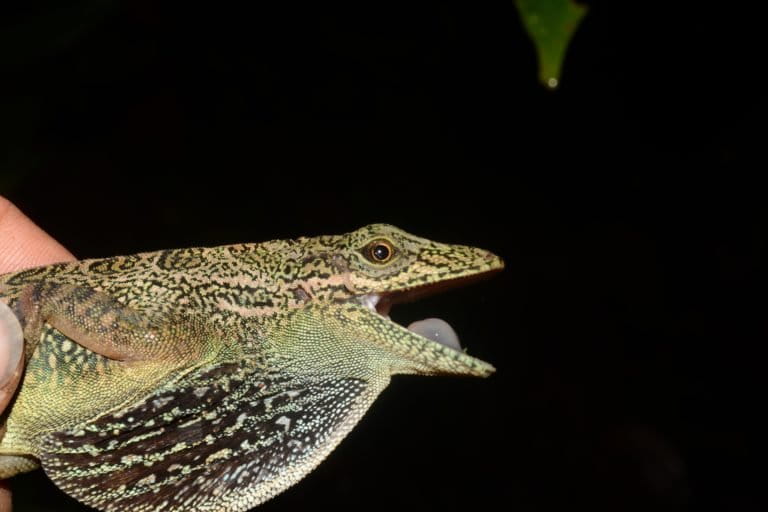Microbiomes of Venezuela’s lost glaciers, mile-high Andean lizards, and starving baby seals are among the recent top stories from Mongabay Latam, our Spanish-language service.
The abandoned microbes of Venezuela’s last glaciers
Venezuela will be the first country where glaciers disappear. In 30 years, from 1978 to 2008, its glaciers lost 9 vertical meters a year and shrank from 136 hectares (336 acres) to 43 hectares (106 acres). The economic crisis exacerbates the loss, as power shortages endanger glacial bacteria collections in abandoned university labs. A lead researcher who fled the country estimated that the samples could contain hundreds of unknown species of microorganisms. Initial findings showed bacteria that acted like natural biopesticides.
New mile-high lizards found in the Andes
A new lizard species lives up to 2353 meters (1.4 miles) high in the Andes mountains between Ecuador and Colombia. The Chocó region, which runs from Panama to Ecuador, is one of the most biodiverse in the world. Mining and coca cultivation in Colombia are the main threats to the lizards and amphibians in this area. For a long time, the newly registered species (Anolis dracula) was confused with another lizard (Anolis aequatorialis). Ecuadoran researchers first identified the new species three years ago.

Climate change could starve seal pups
Climate change is causing chain reactions in the Pacific Ocean that could ultimately starve seal and walrus pups, according to a marine mammal researcher. Franz Trilimich analyzed the effects of environmental stress from the exceptionally strong El Niño of 1982-83 on seals and walruses in the Galapagos, and found that warmer waters resulted in food chain changes that forced them to hunt in deeper waters. Their pups died of hunger on shore waiting for them, and Trilimich estimates three generations of seals and walruses were lost that year.

Mapping risks to dolphins in Colombia’s Urabá Bay
When people tell Colombian marine biologist María Camila Rosso she “discovered” the dolphins of Urabá, she laughs and says, “They were always there.” In a recent interview, Rosso described her plans to develop a conservation map of the risks that port infrastructure, fishing, and tourism pose to the dolphins in this northwestern bay. She is also investigating whether the common bottlenose (Tursiops truncatus) and Guiana dolphins (Sotalia guianensis) stay in the bay or just migrate through it. Rosso believes the dolphins’ presence is an indicator of the health and productive capacity of the gulf of Urabá, one of the most diverse ecosystems in the country.

Mitre Peninsula Protected Area close to approval in Argentina
Argentina’s parliament is expected to approve the creation of a protected area at the tip of Tierra del Fuego. Given its geographic isolation and difficult waters, the Mitre Peninsula is relatively pristine, and one of the most biodiverse zones of the country, with the largest colonies of marine mammal nurseries in the region.

Dolphin fins are like fingerprints
Dolphin fins identify not only their species but also serve as their ‘fingerprint,’ says Chilean marine biologist Yerko Vilina. Vilina is participating in the finFindR project, a new system and app based on GoogleFace that will archive more than 100,000 dolphin fin images.

Learn more by reading the original stories in Spanish here at Mongabay Latam.
Banner image: researchers take bacterial samples in 2013 from the penultimate glacier; it has since disappeared. Image courtesy of Ymago Foundation.
This story first appeared on Mongabay
South Africa Today – Environment
This article is licensed under a Creative Commons Attribution-NoDerivatives 4.0 International License.
You may republish this article, so long as you credit the authors and Mongabay, and do not change the text. Please include a link back to the original article.












